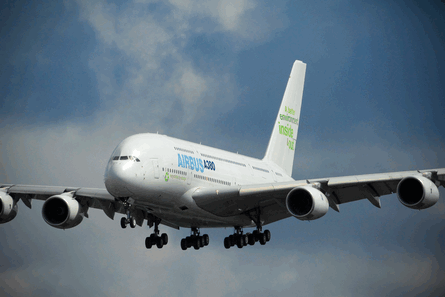Unprecedented tests of conditions for aircraft following the Airbus A380 in flight demonstrate that the wake turbulence it creates is no worse than that produced by any other heavy aircraft, according to the manufacturer's senior vice-president for product safety, Capt Claude Lelaie.
Yet official standards require that standard separations for aircraft behind an A380 are extended by 2nm (3.7km) compared with other heavies, and Lelaie admits he does not see any indication that the International Civil Aviation Organisation-led steering group on the subject is likely to change that standard any time soon.
 |
|---|
© Airbus |
At the 27-30 October international aviation safety seminar held jointly in Honolulu, Hawaii by the Flight Safety Foundation, the International Air Transport Association and the International Federation of Airworthiness, Lelaie revealed more detail than Airbus previously had about the nature of in-trail en-route tests. In the tests the company flew aircraft like its own A318 deliberately into the A380's wake - made visible by smoke streaming - and then compared the smaller aircraft's reaction with its behaviour when flying into the wake of an Airbus A340-600.
Measurements taken in the A318 following the A340-600, says Lelaie, flying stick-free (pilot releases controls on entry to the wake) and also with the pilot allowed to use manual control inputs, showed roll rates, pitch rates and altitude deviation rates that, compared with those measured following the A380 were "so similar that the differences were of no significance". The rates measured following deliberate wake encounters 11-12nm behind the A380 were a 15°/s roll rate with negligible pitch impact, and the A380's wake behaviour shows the disturbed air tends to dip by about 1,000ft (300m) by 12- 15nm behind the aircraft, which is more or less normal for other heavy types.
The number of lidar laser radar scans of A380 wake behaviour on airport approaches now amounts to 280 runs, with 87 comparison runs for Boeing 747s and 39 for 777s. None of the information gained, says Lelaie, justifies a system like that which now exists, whereby an aircraft classified "light" may fly 6nm behind a 747, but the 6nm separation is also applied when a 747 is following an A380. The 747 could follow any other "heavy" at 4nm.
The problem of getting acceptance of changes to the existing standards, says Lelaie, is the need to get "a lot of experts to agree on a lot of data"
Source: Flight International























